Montrealers are heading to the polls on November 2 to elect a new mayor. While the citizens have the democratic privilege of voting, the Dead certainly do not. As such, Haunted Montreal will be representing them and making demands to the mayoral candidates on their behalf. Generally-speaking, the Dead want two things: to be remembered and to be respected.
Welcome to the ninety-third installment of the Haunted Montreal Blog!
With over 500 documented ghost stories, Montreal is easily the most haunted city in Canada, if not all of North America. Haunted Montreal dedicates itself to researching these paranormal tales, and the Haunted Montreal Blog unveils a newly researched Montreal ghost story on the 13th of every month!
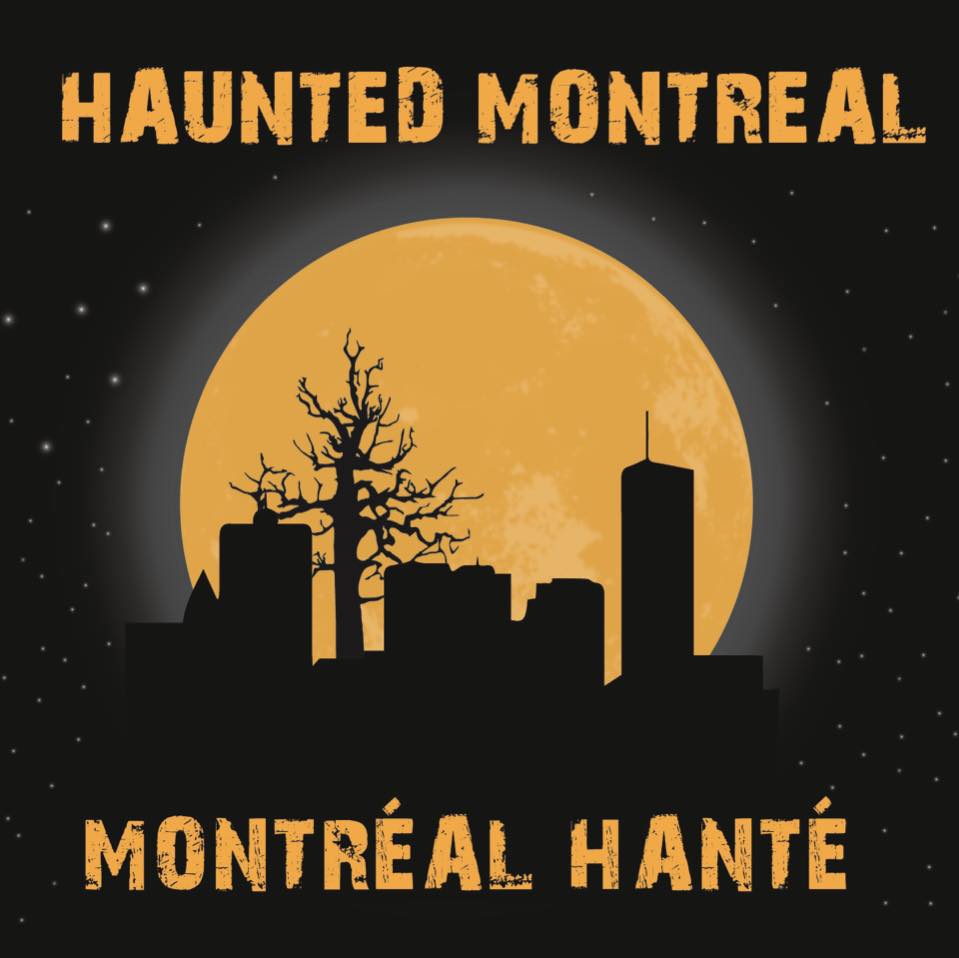
This service is free and you can sign up to our mailing list (top, right-hand corner for desktops and at the bottom for mobile devices) if you wish to receive it every month on the 13th! The blog is published in both English and French!
With the spring finally here, Haunted Montreal’s seasons of public outdoor tours is now available! Offered every Saturday night, we have four tours on rotation (Old Montreal, Griffintown, Downtown and Mount Royal.)
Our Haunted Pub Crawl is also offered every Sunday at 3 pm in English. For tours in French, these happen on the last Sunday of every month at 4 pm.

We are also offering a special Irish Famine in Montreal Walking Tour to honor over 6000 victims buried under the Black Rock in mass graves. It is on Saturday, May 27 at 1 pm (in English) – the day before the annual Walk to the Stone.
Our Paranormal Investigation in the Old Sainte Antoine Cemetery begins on June 2 in French and June 3 in English.

Private tours for all of our experiences (including outdoor tours) can be booked at any time based on the availability of our actors. Clients can request any date, time, language and operating tour. These tours start at $190 for small groups of up to 7 people.
Email info@hauntedmontreal.com to book a private tour!
Our Virtual Ghost Tour is also available on demand!

Want to give the gift of a haunted experience?
You can now order a Haunted Montreal Gift Certificate through our website. They are redeemable via Eventbrite for any of our in-person or virtual experiences.
There is no expiration date.
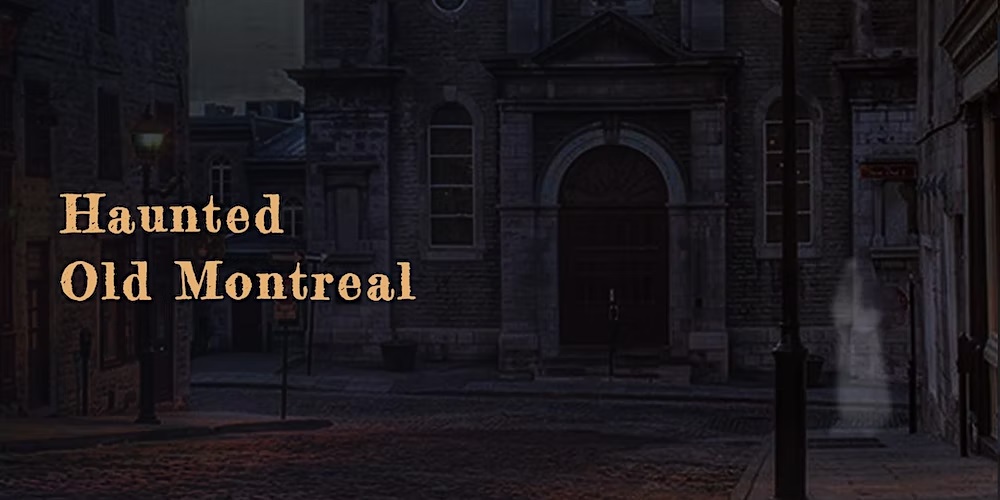
Lastly, we have an online store for those interested in Haunted Montreal merchandise. More details are below in our Company News section!
This month we examine a new campus being built on the haunted site of an old Irish Famine asylum at St. Patrick’s Basilica.
Haunted Research
The Université de Montréal is constructing a brand new campus for its business department, Hautes Études Commerciales (HEC), next to St. Patrick’s Basilica. An Irish Famine asylum called St. Bridget’s Home and Night Refuge once existed on the site, which catered to the destitute, the homeless and for many isolated women. The asylum witnessed countless tragedies over the years, allegedly resulting in many ghosts. As such, there is already talk that the shiny new campus will be haunted by Irish Famine spirits.

The Irish Famine’s impact on Montreal was probably the most devastating tragedy in the city’s history. In 1847, over Irish 75,000 refugees, many of them stricken with Typhus, landed on Montreal’s wharves in a city of only 50,000 people.
They were escaping a British colonialism, exacerbated by a potato famine that left over a million dead on Ireland’s shores. As the Irish starved, the British exported food from Ireland and absentee Anglo-Irish landlords evicted tens of thousands of starving farmers from the lands that the colonizers had stolen.
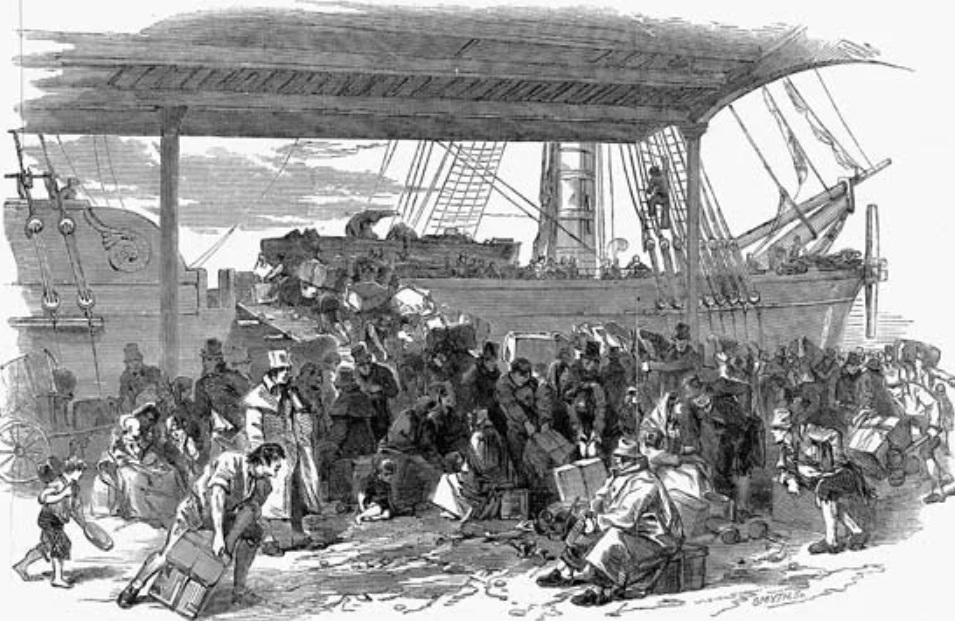
While crossing the Atlantic Ocean on “Coffin Ships”, many of the refugees contracted typhus fever and died at sea, at Grosse-Ile Quarantine Station or in Montreal.
Those who died in Montreal were buried in mass graves along the Lachine Canal and at the site of the fever sheds in Point Saint Charles where the Black Rock Monument stands today.
The colonial tragedy left over 600 Irish orphans whose parents had perished, along with countless widows and other estranged family members.

John Francis Maguire recounted the tragedy in The Irish in America (1868):
“This deplorable havoc of human life left hundreds of orphans dependent on the compassion of the public; and nobly was the unconscious appeal of this multitude of destitute little ones responded to by the French Canadians. Half naked, squalid, covered with vermin generated by hunger, fever, and the foulness of the ship’s hold, perhaps with the germs of the plague lurking in their vitiated blood, these helpless innocents of every age–from the infant taken from the bosom of its dead mother to the child that could barely tell the name of its parents–were gathered under the fostering protection of the Church.”
Officials at the newly-constructed St. Patrick’s Church, which opened in 1847, scrambled to help as best as they could, along with other religious orders.
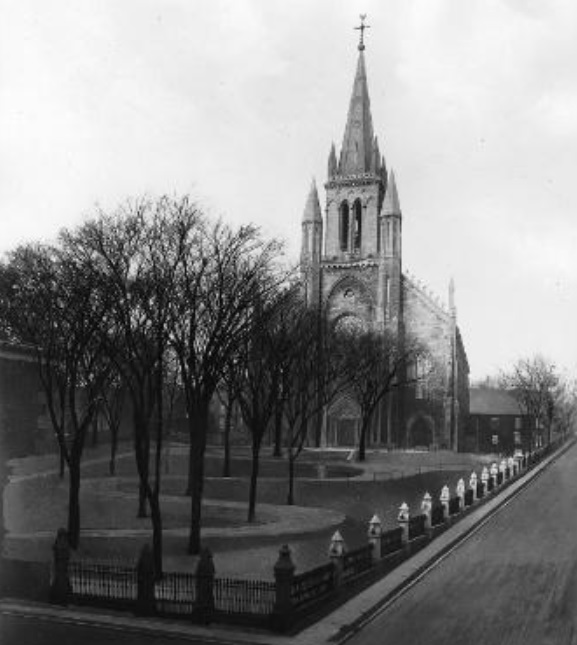
While many of the orphans were adopted (including hundreds into French-speaking households), there was a great need to provide additional care for those who fell through the cracks.
Overwhelmed by the growing number of patients, the government authorities appealed to the Grey Nuns for help. At first, they cared for the refugees in a house located on the Saint-Gabriel farm, then in a building on Saint Laurent Boulevard.
Unfortunately, the refuge had to close its doors due to lack of resources. The nuns subsequently housed the sick in various temporary locations. The need for a permanent refuge and orphanage was obvious.

The following year, a remarkable priest named Father Patrick Dowd was deployed from Ireland to take charge of St. Patrick’s Church and the situation facing the Famine refugees.
Father Dowd was born in Dunleer, Ireland in 1813. He studied for the priesthood in Newry and was ordained in 1837 at the Seminaire de Saint-Sulpice in Paris.
He became a Sulpician in 1848.
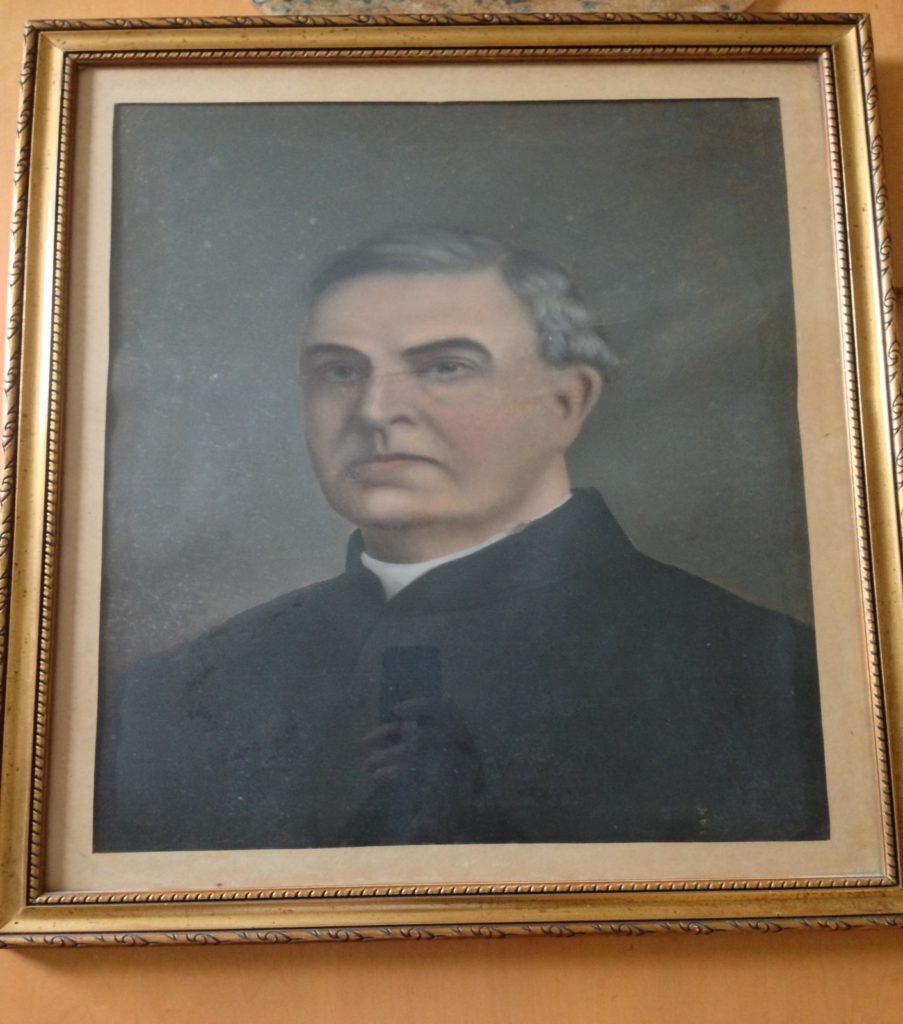
At the time, Montreal’s Catholics worshipped only in French. In 1846, Father Joseph-Vincent Quiblier, the Sulpician superior of the Petit séminaire de Montréal, travelled to Ireland to recruit Irish priests. When Father Patrick Dowd answered the call, the Irish archbishop told Father Quiblier: “You are asking for my own heart,” but he gave permission for Father Dowd to come to Montreal.
Father Dowd arrived in June 1848 and was appointed to serve the burgeoning Irish immigrant community, which had fled to Montreal during the Great Famine. At St. Patrick’s Church, he quickly became known as “the unofficial bishop” of Montreal’s Irish community. As pastor, he was both revered and feared.
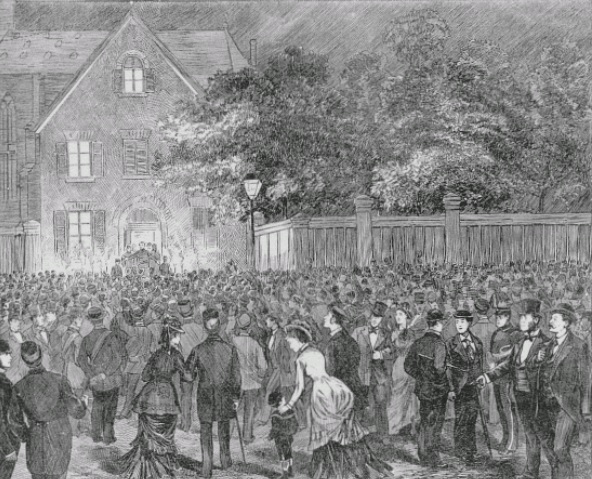
His blunt words and sometimes vindictive behavior were tempered by his extraordinary ability to charm. He possessed an extraordinary intelligence and boundless energy. Father Dowd was also well known for his unshakeable firmness, inexhaustible charity and selflessness. These qualities no doubt explain why his parishioners revered him so much.
As a man who gave his all to Montreal’s Irish, he would go on to do great things for the Irish community in Montreal.

When Father Dowd arrived, he immediately started planning for the construction of both an orphanage and a refuge for the vulnerable. At the time, the Grey Nuns were struggling to operate their refuge for widows, young girls in need of protection and victims of domestic violence. With a lack of resources and no permanent home, the task of caring for the needy was extremely challenging.
Father Dowd got to work raising funds. After just three years, in 1851, the doors opened to St. Patrick’s Orphanage. Located to the north-west of the church, the imposing 4-story structure faced Dorchester Street (today’s René-Lévesque Boulevard).
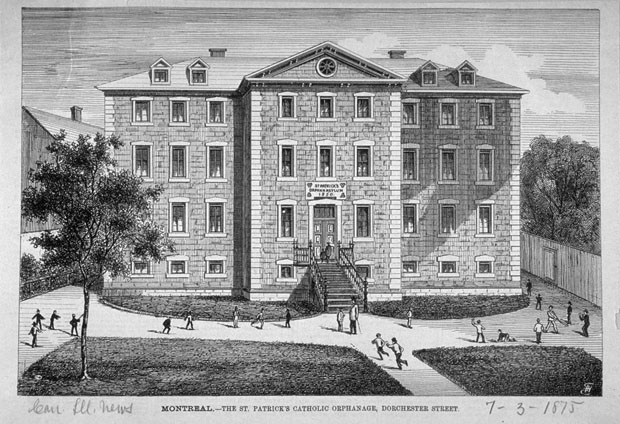
Father Dowd then purchased a sizeable burial plot in the Notre-Dame-des-Neiges Cemetery. Given that the death rate among Irish Famine survivors was elevated, he knew that there many would perish too young. Orphaned children who survived Typhus had weakened immune systems and there were many mental health issues facing those who had lost their loved ones. Destitution and homelessness only further worsened health outcomes. Some of the refugees turned to begging and prostitution to try and survive.
Next, Father Dowd began planning for a permanent refuge. After years of fund raising, famous architect Victor Bourgeau was chosen to design the building. The mission of this institution was to care for old men and women, to provide refuge for young girls and find places for them in suitable homes. The refuge also provided night lodging for homeless individuals and families.
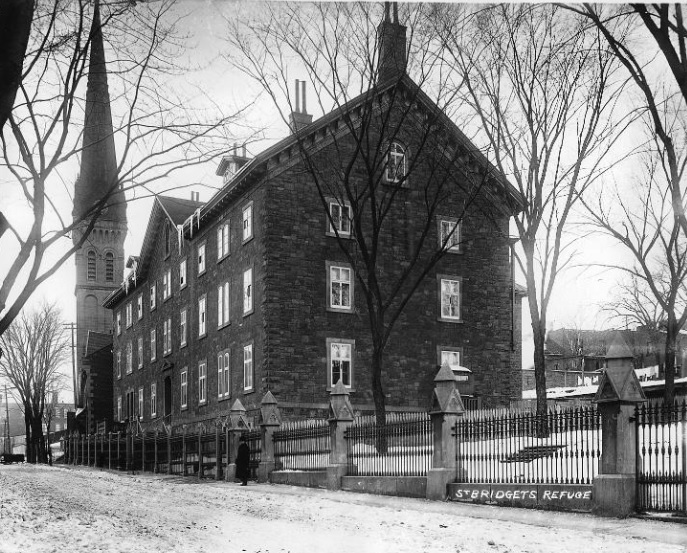
In 1865, St. Bridget’s Home and Night Refuge opened its doors to some of the city’s most vulnerable people. Many of those who sought comfort there were Irish Famine survivors who never recovered from their losses. The refuge was a bustling place that always provided a free breakfast for those who had spent the night.
Unfortunately, as the years passed many of the residents perished and were buried in the cemetery plot Father Dowd had arranged on Mount Royal. Causes of death included everything from old age and diseases like typhus, cholera and smallpox to suicides and even people dying of heartbreak.

Over 200,000 people used the refuge’s services in its first 20 years of existence.
In 1883, a major problem arose. The Anatomy Act of Quebec was passed on March 30. It stipulated that all hospitals, orphanages, prisons, poorhouses and other government-funded charities were obliged to hand over corpses of those who had died there unless the body was claimed by a family member within 24 hours.
The rationale behind the new law was to put a stop to all of the body-snatching to meet the needs of Anatomy students.

Medical schools that acquired bodies from anyone but the municipal Anatomy Inspector would be fined as much as $200, as would government-funded charities that refused to hand over their unclaimed dead.
Father Dowd was very uneasy about this new Anatomy Act because the Catholic Church generally frowned upon human dissection, considering it a form of desecration. When Father Dowd objected, the government coerced the orphanage and refuge into sending the dead bodies to Anatomy under threat of punishment.

The Quebec Anatomy Act was an undeniable success. In March, 1884, the Canada Medical and Surgical Journal announced that no grave robbing had been reported in Quebec that winter, stating: “The requirements of the Medical Schools have been amply met.”
Father Dowd was not happy about the government’s coercion, especially given the fact that most orphans had no families to claim their bodies. While evidence is scant, there are rumours that Father Dowd found ways to secretly bury some of his parishioners in the cemetery plot through stealth and by cooking the record books.
As he grew older, his powerful voice began to wane during his sermons. In early December, 1891, he was admitted to the Seminary’s infirmary with pneumonia. Father Dowd passed away on December 19 at age of 78.
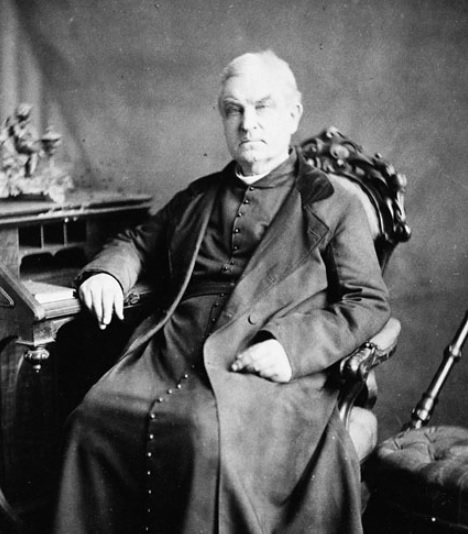
Given his popularity in life, over twenty thousand people filed past his remains. Father Dowd’s funeral was held in Notre-Dame Church and was attended by 4 bishops and 200 priests. Unlike many in his flock who were sent to Anatomy, Father Patrick Dowd was buried in the crypt of the Grand Séminaire among his fellow deceased Sulpician priests.
While the orphanage was demolished in 1904, the refuge continued to operate under the leadership of the Grey Nuns. In 1928, St. Bridget’s Refuge was renamed the Father Dowd Memorial Home. For decades, it would continue to provide services to some of the city’s most needy. However, as the years passed the building slowly began to show its age.
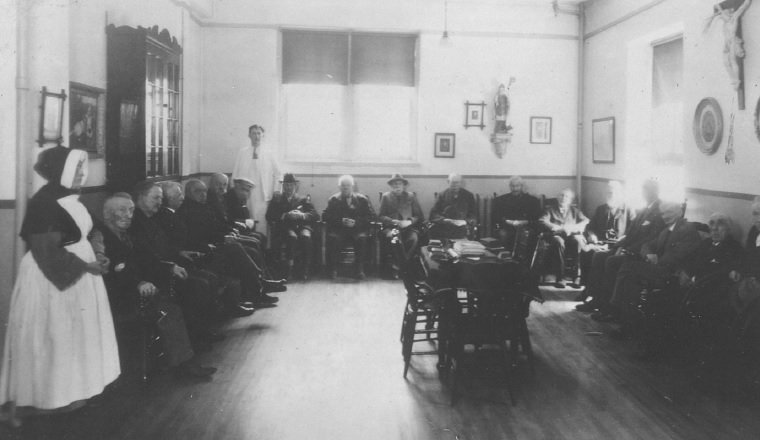
By 1977, the refuge was deemed outdated and structurally unsound. It did not meet modern safety standards and was starting to crumble. The pastor and chairman of the Board of Saint-Patrick decided to abandon the home after securing a new location in Côte-des-Neiges.
Once the residents had relocated, the forlorn building was boarded up and left to decay.

The empty shell of the old refuge looked out of place so close to the beautiful St. Patrick’s Church. Many passersby and worshippers speculated that the abandoned building had the look and feel of a “haunted house”. Others called it an “eyesore” that brought up nothing but painful memories.
After numerous complaints, the original St. Bridget’s Refuge was demolished in 1979. The Board of Saint-Patrick then converted the building’s footprint into a parking lot. The foundations of the demolished refuge were paved over with asphalt.
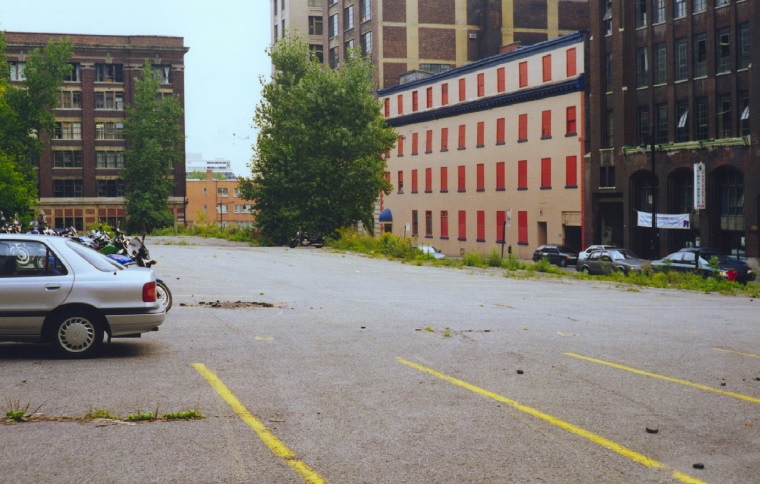
As the years passed, there were some new developments. On St. Patrick’s Day, March 17, 1989, the church was promoted to the title of Minor Basilica by Pope John Paul II. The designation was requested by Paul Grégoire, the cardinal archbishop of Montreal.
On April 7, 1992, a terrible fire broke out at the new Father Dowd Memorial Home in Côte-des-Neiges.
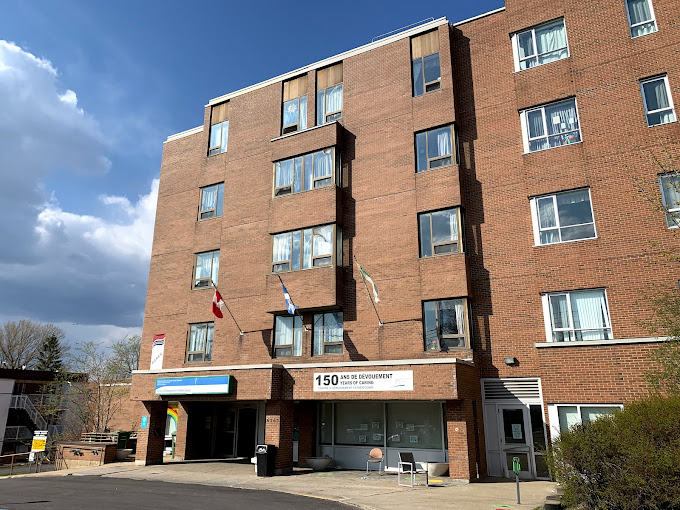
Triggered by a lit cigarette on the top floor, five elderly people died and several others were seriously injured.
In 1997, St. Patrick’s Basilica and the City of Montreal entered a deal allowing the St. Bridget’s Refuge site to be transformed into an unofficial greenspace. The Power Corporation financed the landscaping, which highlighted the foundations of the old refuge. The City of Montreal provided benches, garbage cans and annual maintenance.

The small park was an oasis in the sea buildings that is Downtown Montreal. Local residents, parishioners, tourists and office workers on lunch break enjoyed the greenspace.
However, on April 30, 2009, City of Montreal officials informed St. Patrick’s Basilica that it was cancelling the 1997 agreement. There seemed to be a dispute of some sort between both parties.
The following May 15, the City interrupted the maintenance and surveillance of the premises and municipal employees dismantled and removed benches and garbage cans.

In his missive, the Director of Public Works noted: “We are sure that the assistance granted by the City to make this place a pleasant place will have benefited the Fabrique Saint-Patrick and its faithful.”
Soon after, the greenspace started to deteriorate. The Basilica received complaints from neighbors about uncleanliness, illegal occupation and dangerous nocturnal activity on the premises. There were also sightings of a disheveled ghostly beggar who would approach people at night with a tin cup extended before vanishing into thin air.
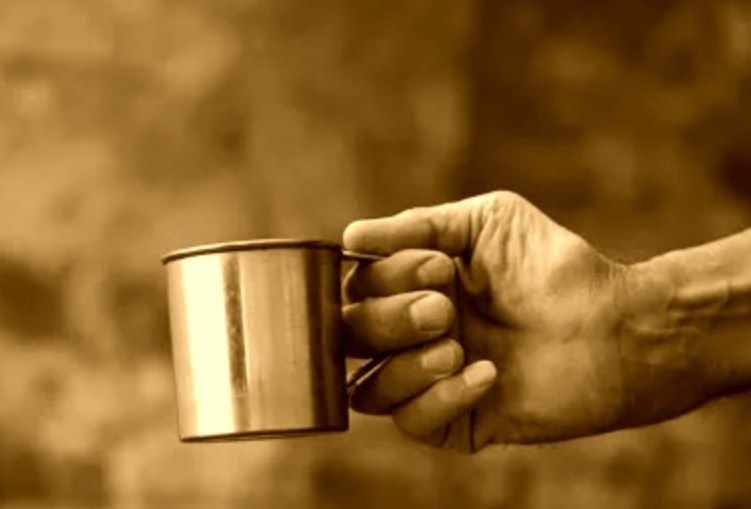
During our research, Haunted Montreal found one local resident who would encounter this ghost frequently while walking her dog at night. The situation was becoming untenable.
According to the Catholic Register, St. Patrick’s Basilica decided to sell the St. Bridget’s site after the City of Montreal launched a lawsuit for back taxes owed from the church’s parking lot. The basilica had operated the parking lot tax-free for decades, but the city claimed it was a business enterprise and thus should not have been exempt from taxes.
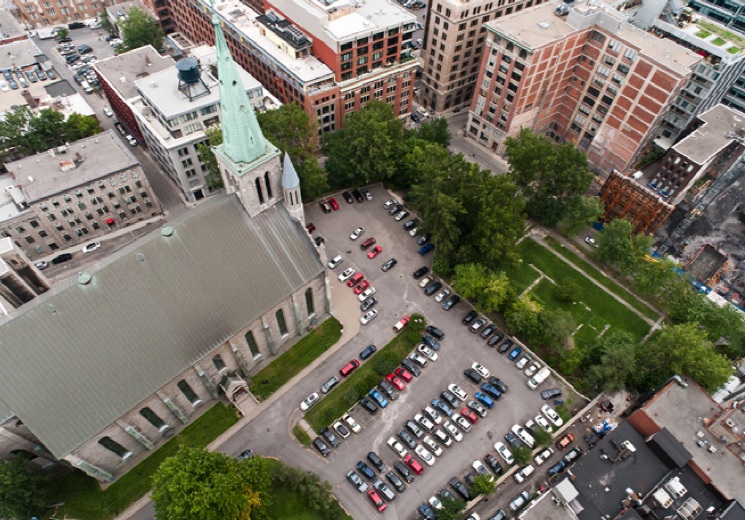
As such, St. Patrick’s Basilica decided to sell the land and set up a foundation. Warden Peter O’Brien said at the time: “The sale will secure the financial future of the historic church.”
HEC purchased the land in May 2018 and announced that it would build a $184-million pavilion on the St. Bridget’s Refuge site.
Local residents were not impressed and launched an unsuccessful campaign to save the greenspace. Phil Chu, who lived two blocks away, said neighbors wanted most of the foundations and green space to remain intact. “The ruins and the green space are not properly preserved in the HEC plan,” he said.

However, a spokesperson for the business school said the project would include a commemorative element recalling the site’s history: “We plan to retrace the foundations of St. Bridget’s Refuge on the ground both inside and outside our building and to use some of the stones from the existing foundations to partially rebuild the walls.”
At the time of this writing, workers at the new HEC campus have dug up some of the foundations of St. Bridget’s Refuge to incorporate them into the new building.
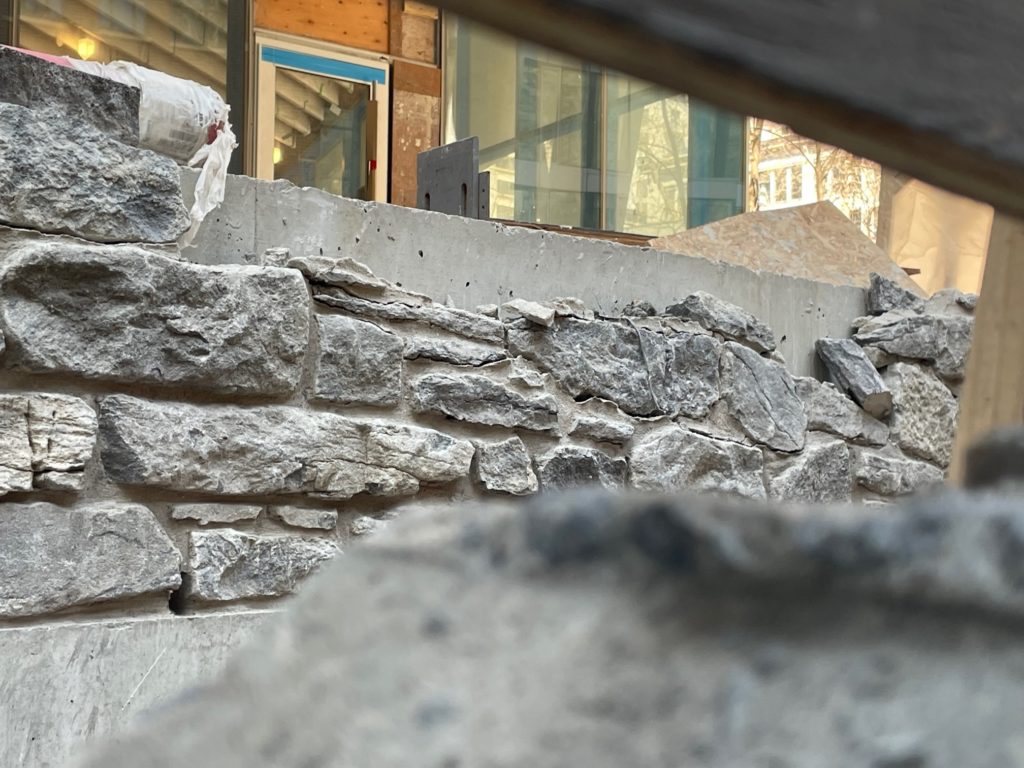
Meanwhile, the City of Montreal claims it has offered to enhance the remaining greenspace in front of the basilica.
One of the problems of reincorporating the remnants of haunted houses into a new structure is that paranormal activity can transfer and infest the newly-constructed building. Montreal’s most famous example of this phenomenon is the Duggan House, which incorporated dressed limestone from Simon McTavish’s haunted castle when it was demolished in 1861.
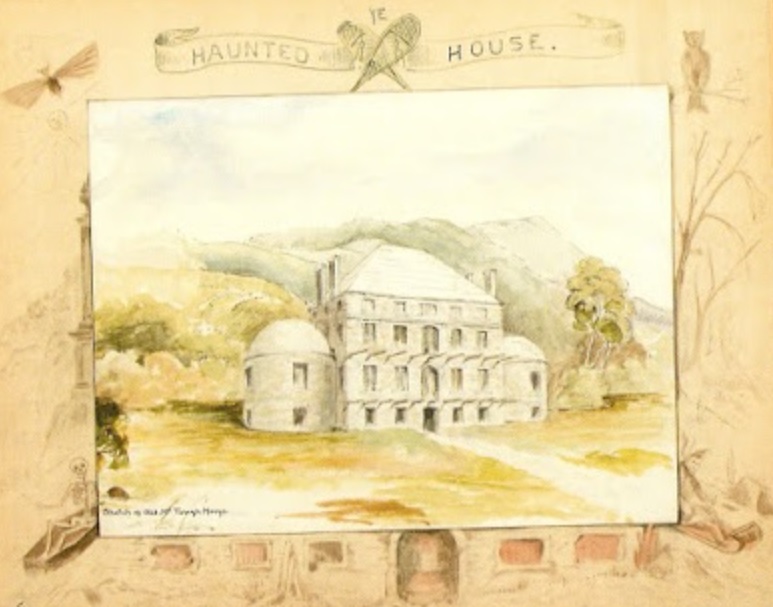
As such, paranormal experts speculate that the term “school spirit” will take on a very different meaning when the HEC campus opens to students.
According to Dominique Desormeaux, a paranormal investigator with Haunted Montreal and 13 Sprits Paranormal:
“The HEC is building on grounds that have been tainted with negative energy, heartbreak, death and sickness. The site is haunted by all of that activity and by building on top of the land, by digging and constructing, they will stir up that energy.”
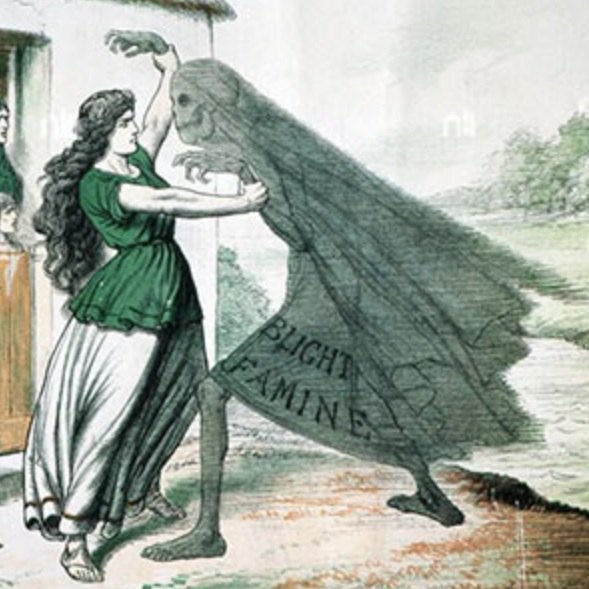
When asked what is in store for the new HEC campus, Desormeaux replied:
“Some spirits will not be at rest, so you can expect a large variety of paranormal activity. These will likely include cold spots, full-body apparitions, the malfunctioning of electrical devices and some people being touched, pushed and scratched by invisible forces. Spirits could even put fear into people and prey on the weak of mind, which could lead some to depression and even to their own demise.”
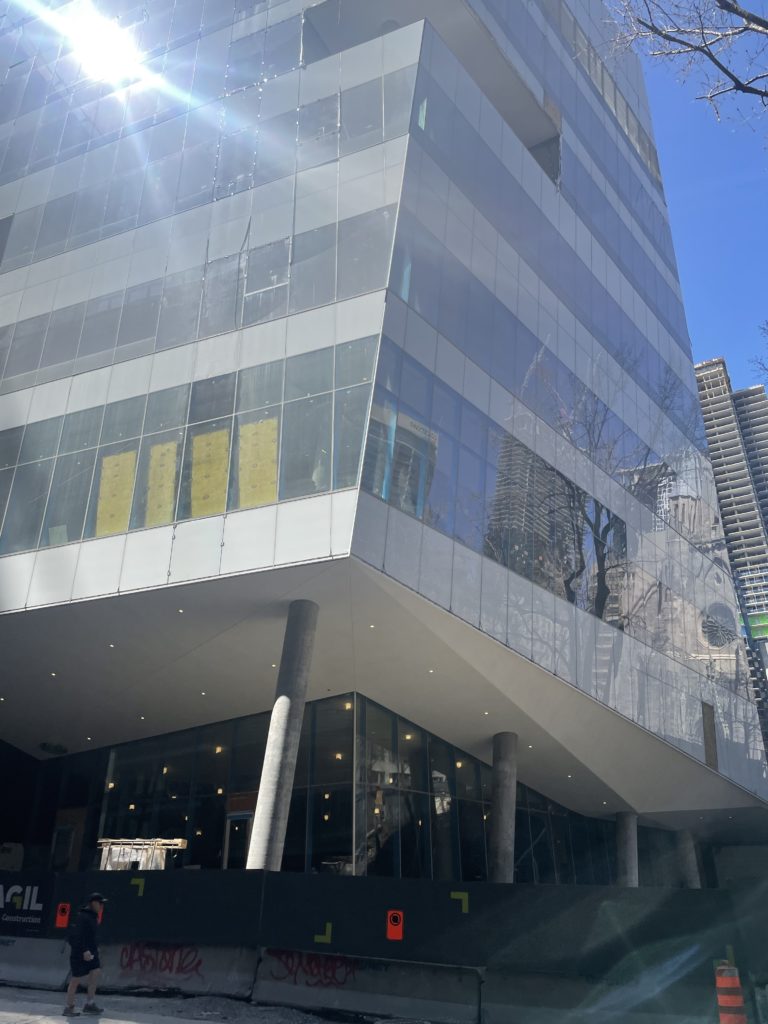
With such tragic history and dire predictions of paranormal activity, Haunted Montreal awaits to see what happens when the new HEC campus opens to its first cohort of students.
Company News
With the spring finally here, Haunted Montreal’s seasons of public outdoor tours is now available! Offered every Saturday night, we have four tours on rotation (Old Montreal, Griffintown, Downtown and Mount Royal.)
Our Haunted Pub Crawl is also offered every Sunday at 3 pm in English. For tours in French, these happen on the last Sunday of every month at 4 pm.
We are also offering a special Irish Famine in Montreal Walking Tour to honor over 6000 victims buried under the Black Rock in mass graves. It is on Saturday, May 27 at 1 pm (in English) – the day before the annual Walk to the Stone.

Our Paranormal Investigation in the Old Sainte Antoine Cemetery begins on June 2 in French and June 3 in English.
Private tours for any of our experiences (including outdoor tours) can be booked at any time based on the availability of our actors. Clients can request any date, time, language and operating tour. These tours are based on the availability of our actors and start at $190 for small groups of up to 7 people.
Email info@hauntedmontreal.com to book a private tour!
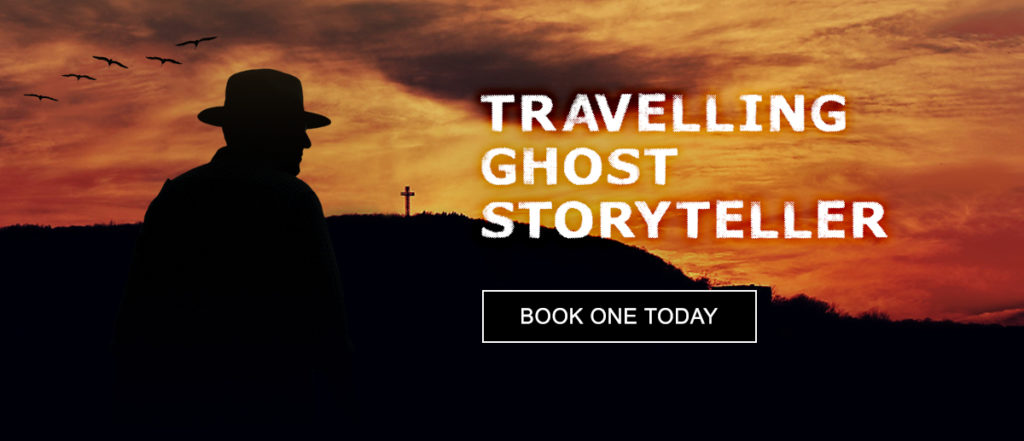
You can bring the Haunted Montreal experience to your office Christmas party, house party school or event by booking one of our Travelling Ghost Storytellers today. Hear some of the spookiest tales from our tours and our blog told by a professional actor and storyteller. You provide the venue, we provide the stories and storyteller. Find out more and then contact info@hauntedmontreal.com
Our team also releases videos every second Saturday, in both languages, of ghost stories from the Haunted Montreal Blog. Hosted by Holly Rhiannon (in English) and Dr. Mab (in French), this initiative is sure to please ghost story fans!

Please like, subscribe and hit the bell!
In other news, if you want to send someone a haunted experience as a gift, you certainly can!
We are offering Haunted Montreal Gift Certificates through our website and redeemable via Eventbrite for any of our in-person or virtual events (no expiration date).
Finally, we have opened an online store for those interested in Haunted Montreal merchandise. We are selling t-shirts, magnets, sweatshirts (for those haunted fall and winter nights) and mugs with both the Haunted Montreal logo and our tour imagery.

Purchases can be ordered through our online store.
Haunted Montreal would like to thank all of our clients who attended a ghost walk, haunted pub crawl, paranormal investigation or virtual event!
If you enjoyed the experience, we encourage you to write a review on our Tripadvisor page, something that really helps Haunted Montreal to market its tours.
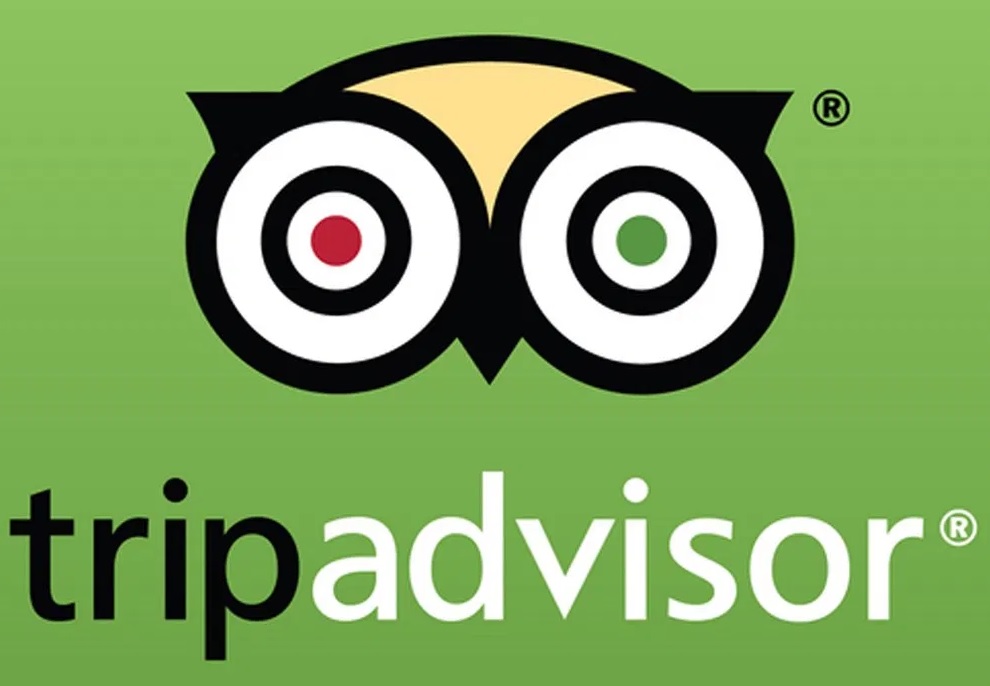
Lastly, if you would like to receive the Haunted Montreal Blog on the 13th of every month, please sign up to our mailing list.
Coming up on June 13: Old Montreal’s Forgotten Cemeteries
Old Montreal is a very popular tourist destination that sees millions of people visit every year. Famous for its cobblestone streets, historic architecture and European vibe, the neighborhood also hosts a dark and disturbing secret. As the site of French colonization, many cemeteries were laid out within the once fortified city. Today, those exploring Old Montreal do so blissfully unaware of the thousands of skeletons that still lie beneath the streets, public squares and historic buildings. With so many forgotten corpses, it’s no wonder that Old Montreal is considered the city’s most haunted area.

Author:
Donovan King is a postcolonial historian, teacher, tour guide and professional actor. As the founder of Haunted Montreal, he combines his skills to create the best possible Montreal ghost stories, in both writing and theatrical performance. King holds a DEC (Professional Theatre Acting, John Abbott College), BFA (Drama-in-Education, Concordia), B.Ed (History and English Teaching, McGill), MFA (Theatre Studies, University of Calgary) and ACS (Montreal Tourist Guide, Institut de tourisme et d’hôtellerie du Québec). He is also a certified Montreal Destination Specialist.
Translator (into French):
Claude Chevalot holds a master’s degree in applied linguistics from McGill University. She is a writer, editor and translator. For more than 15 years, she has devoted herself almost exclusively to literary translation and to the translation of texts on current and contemporary art.




Comments (0)